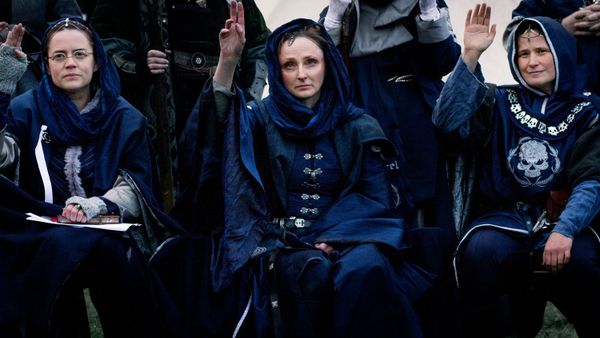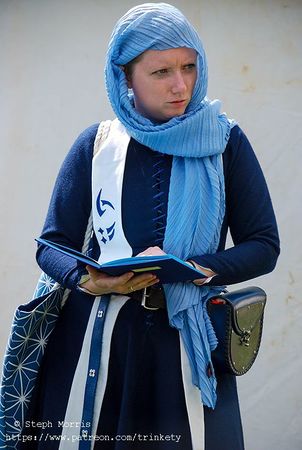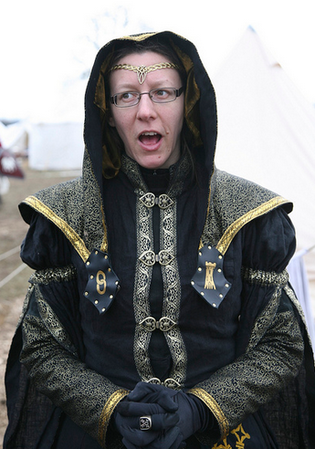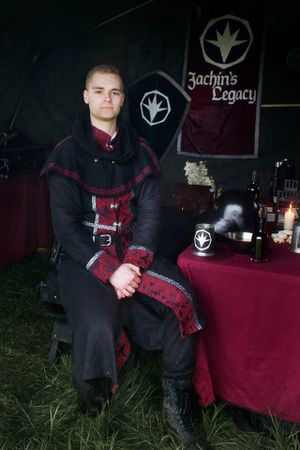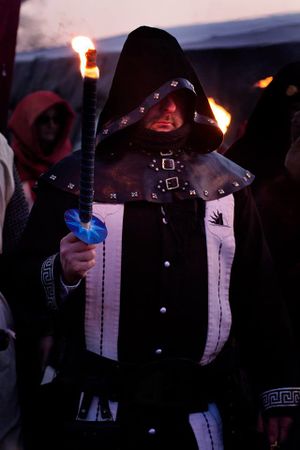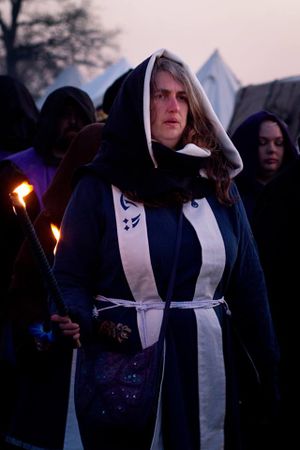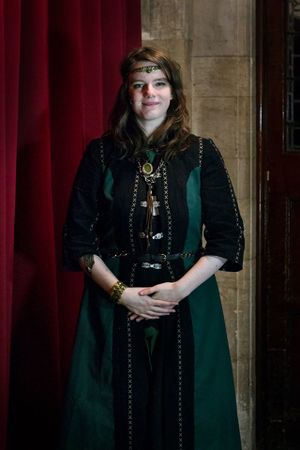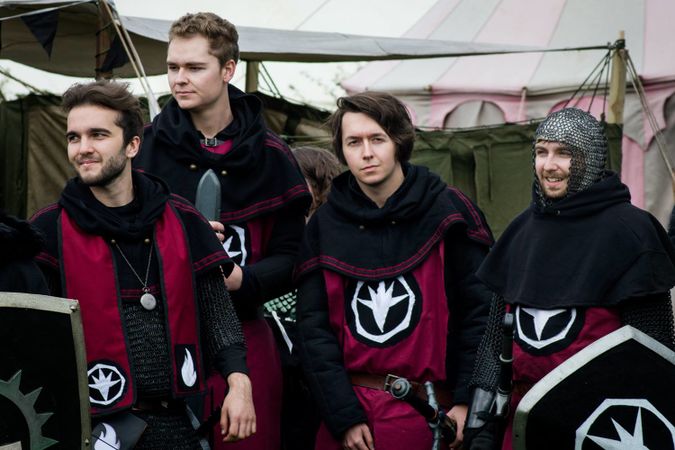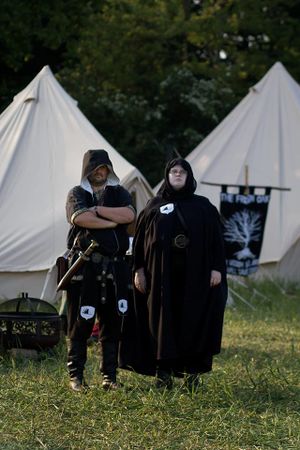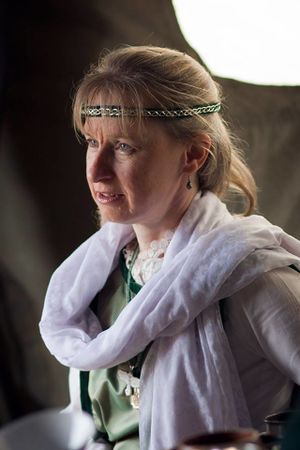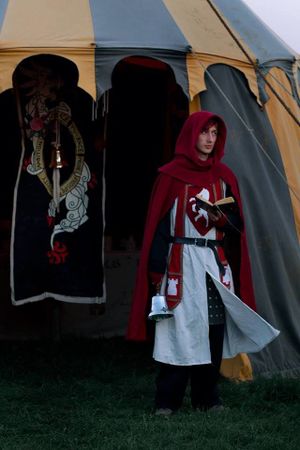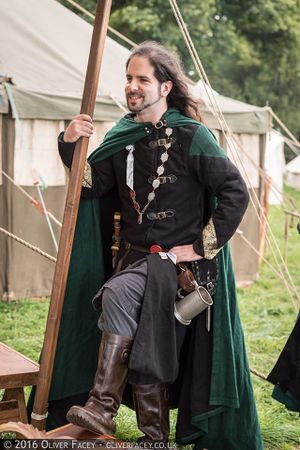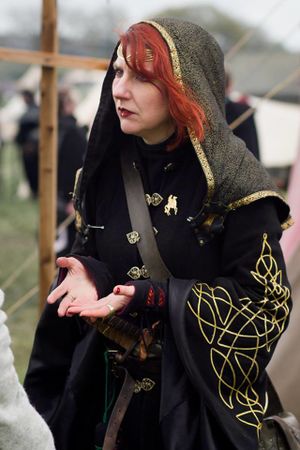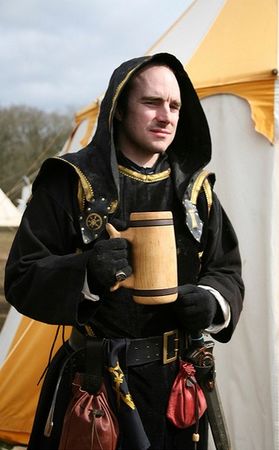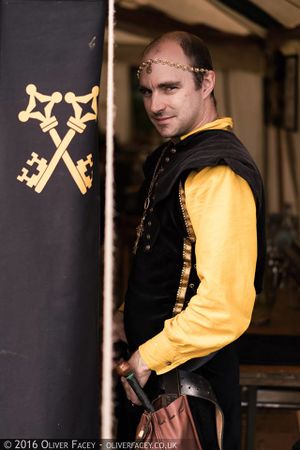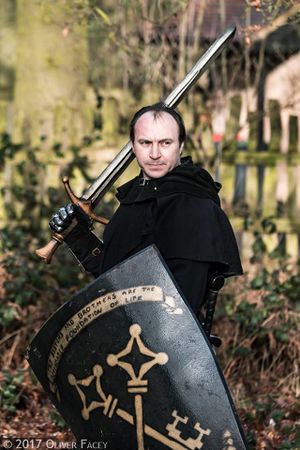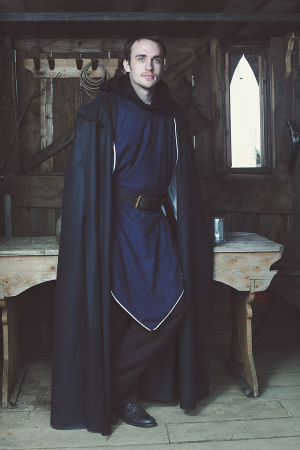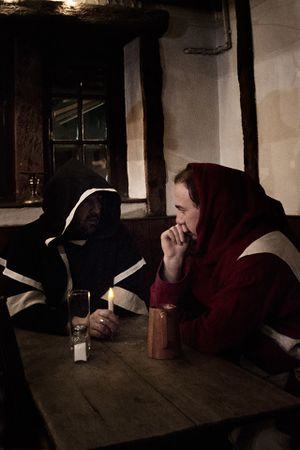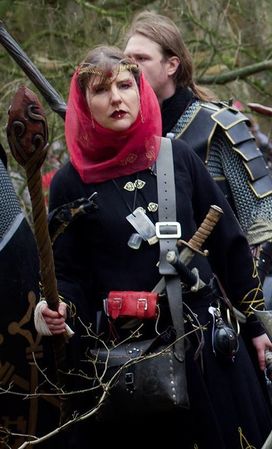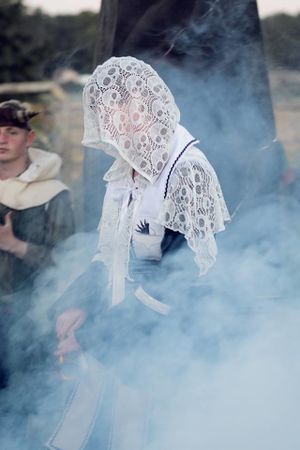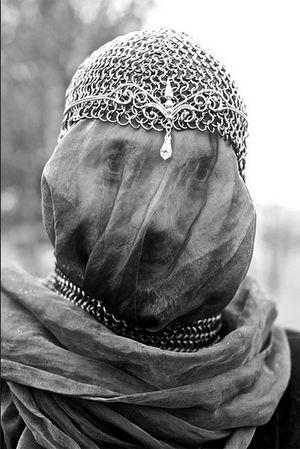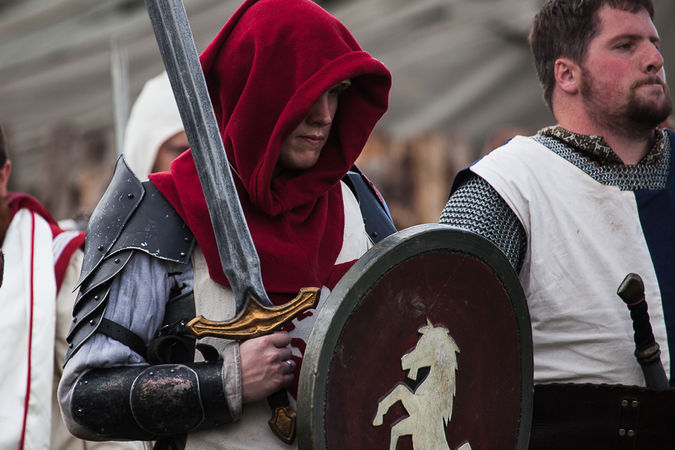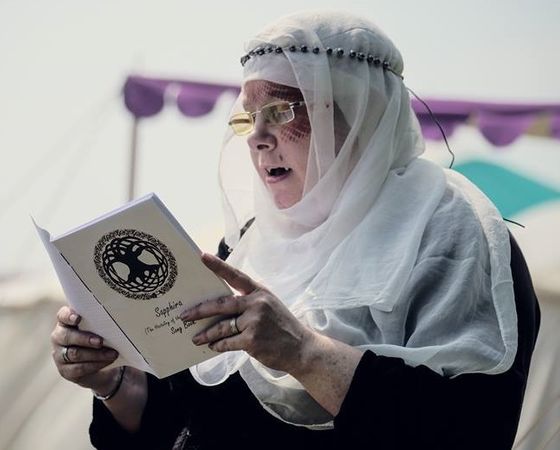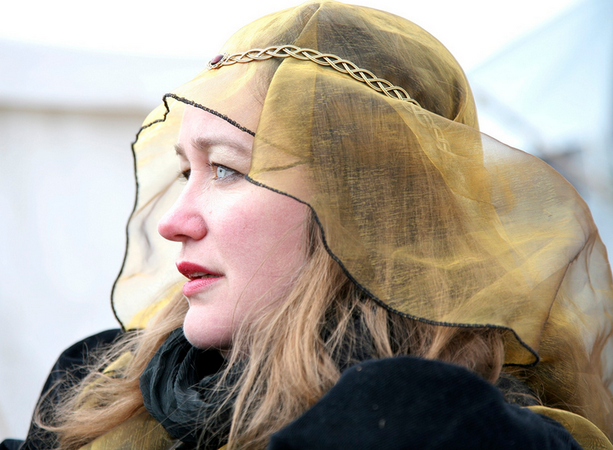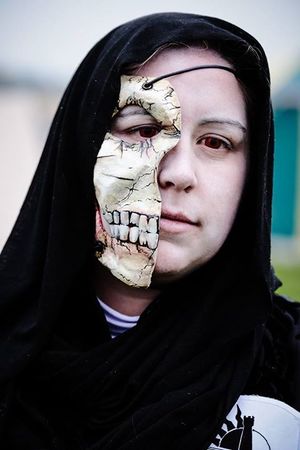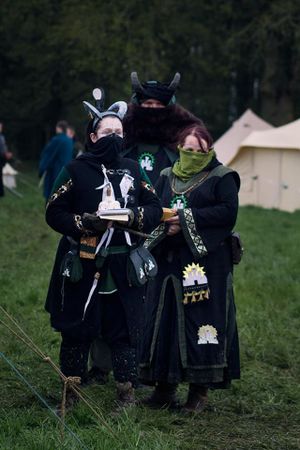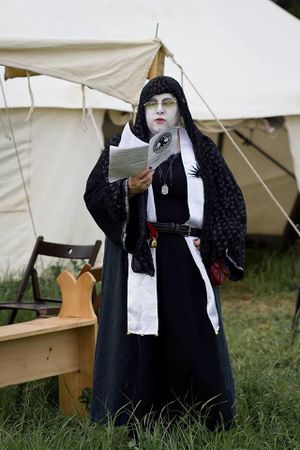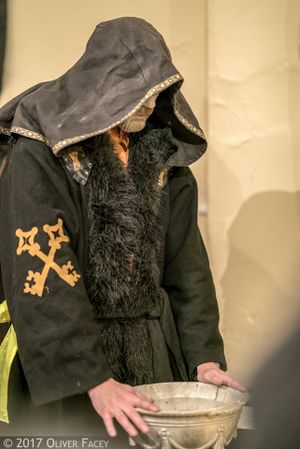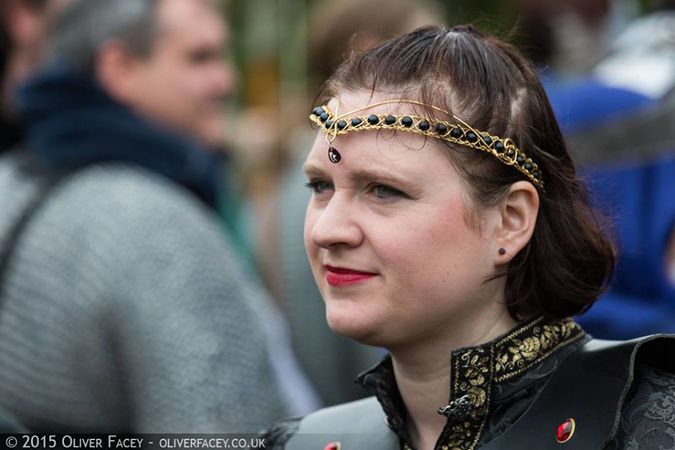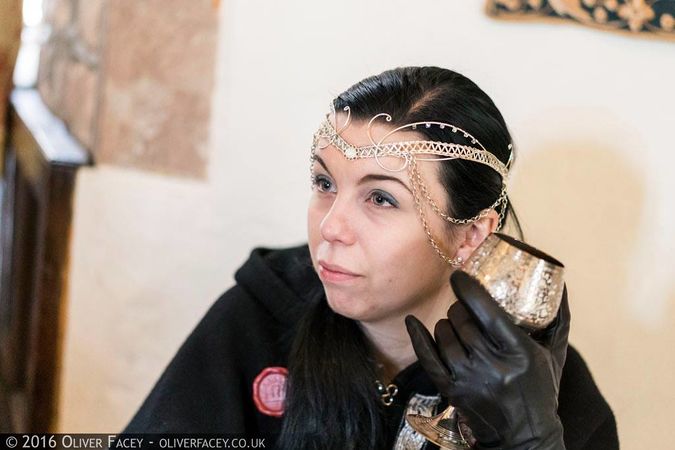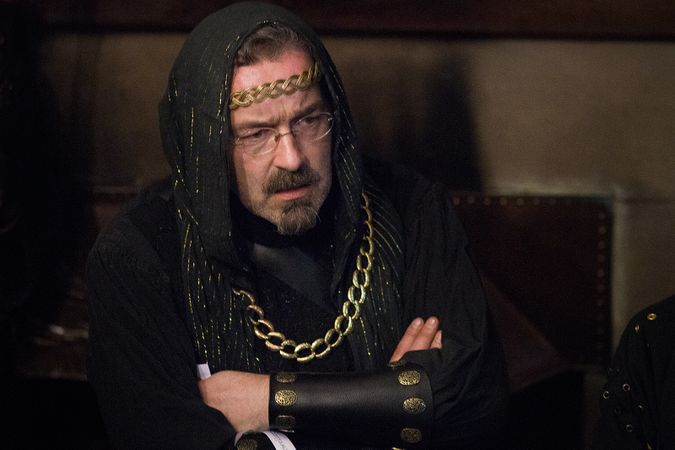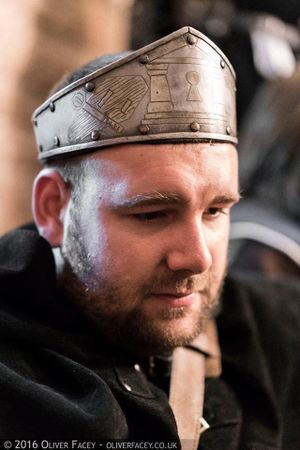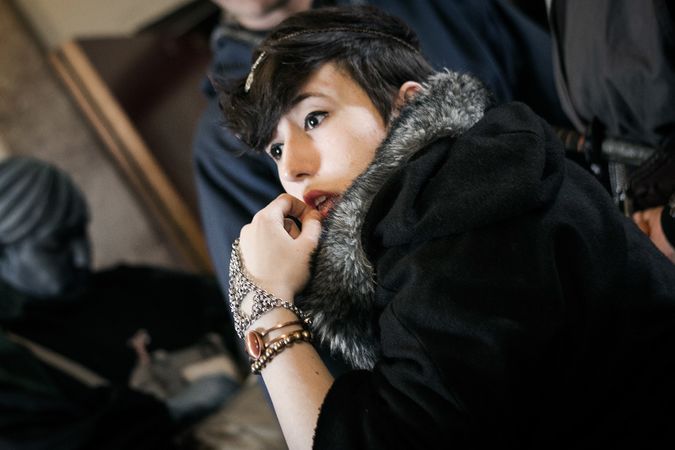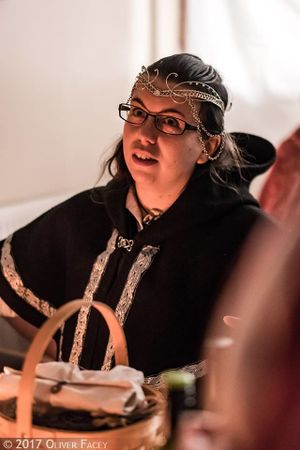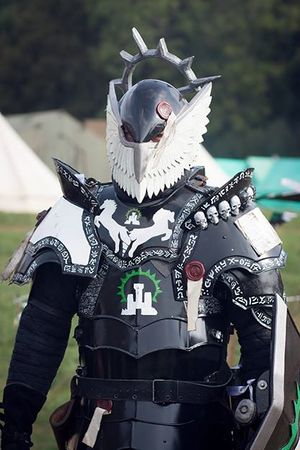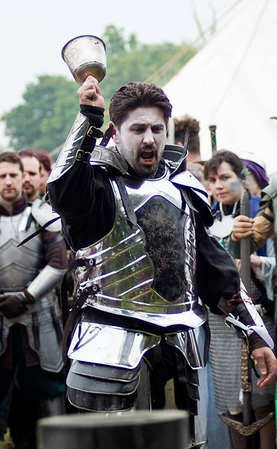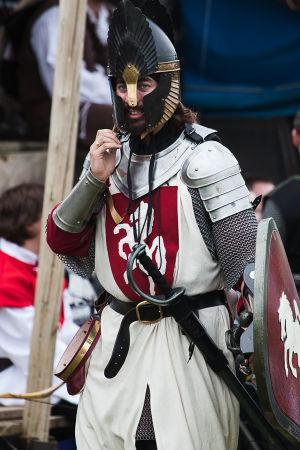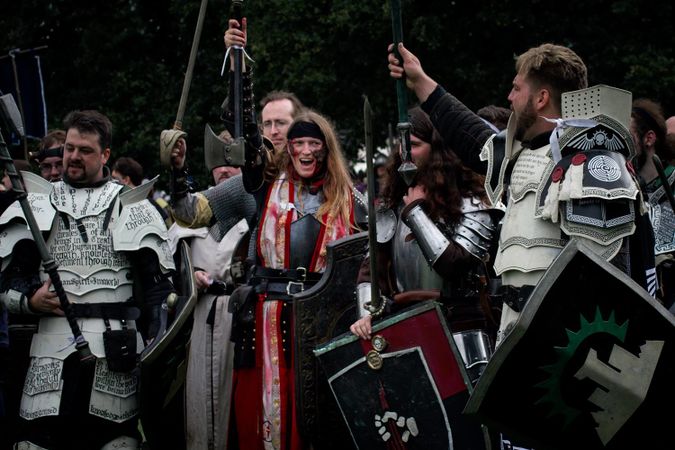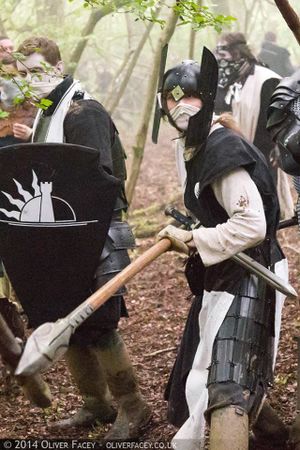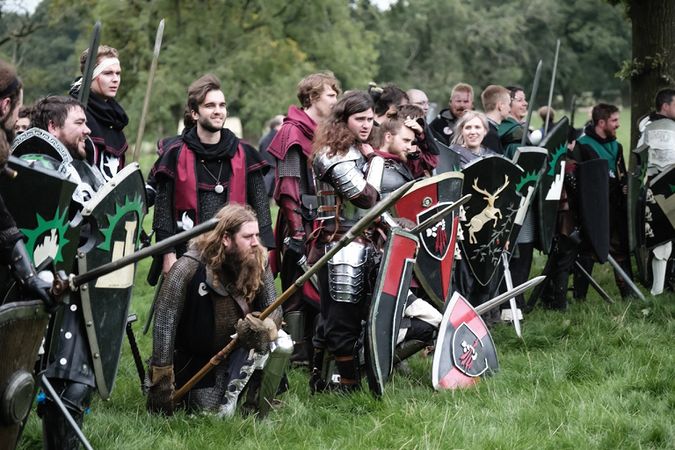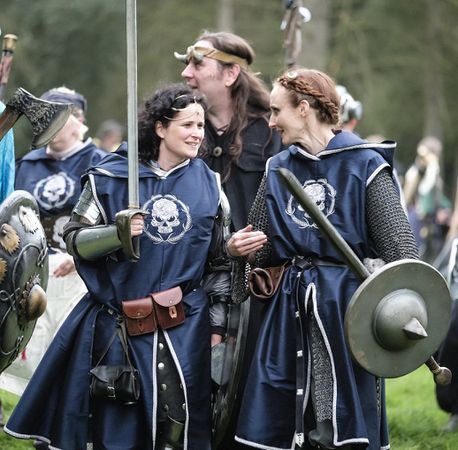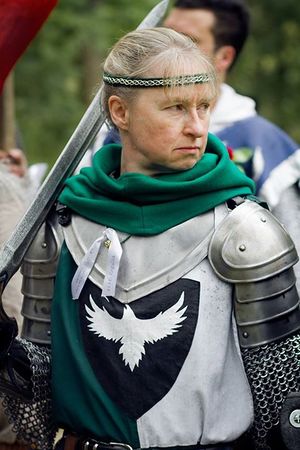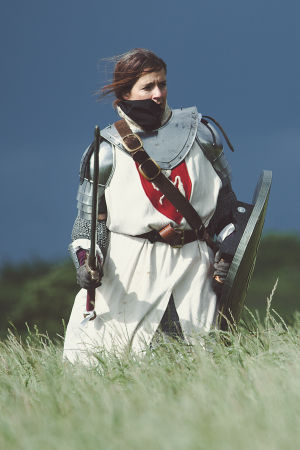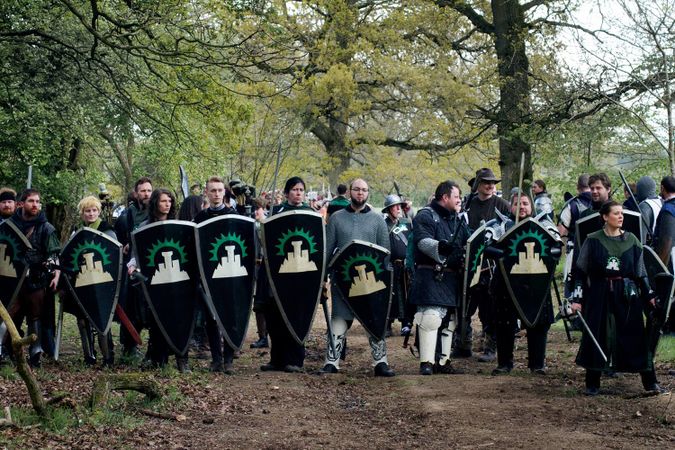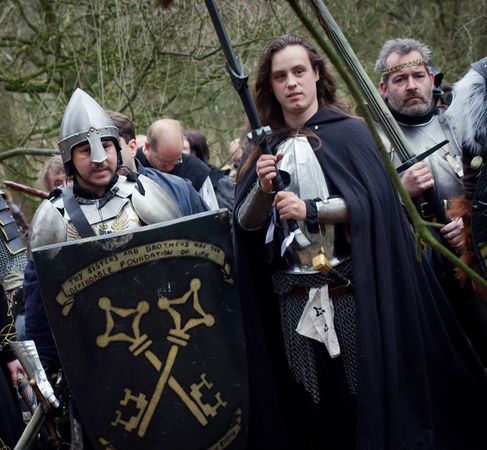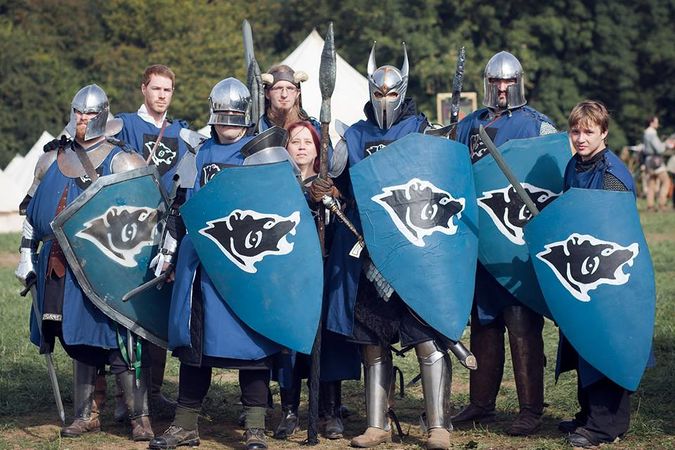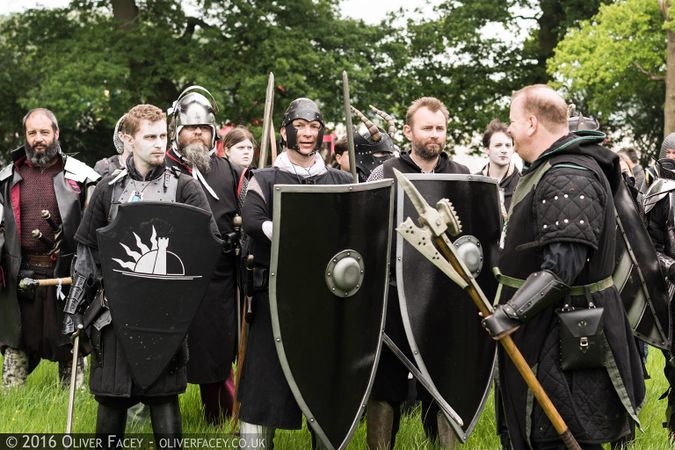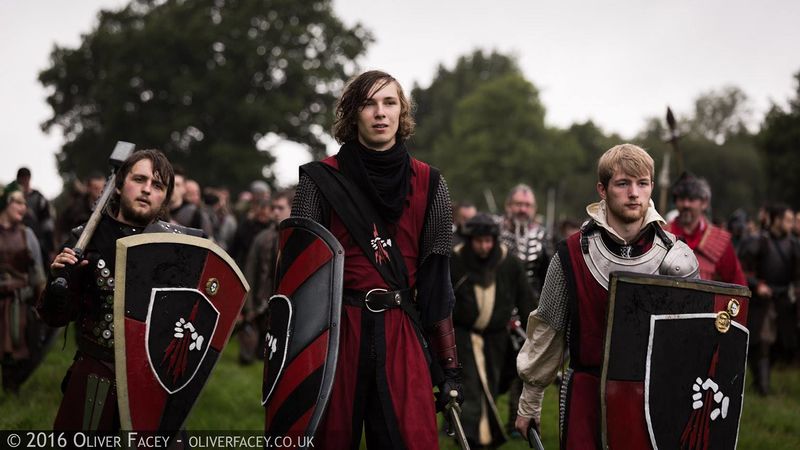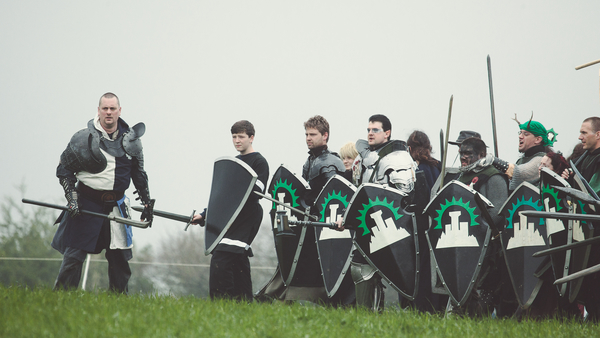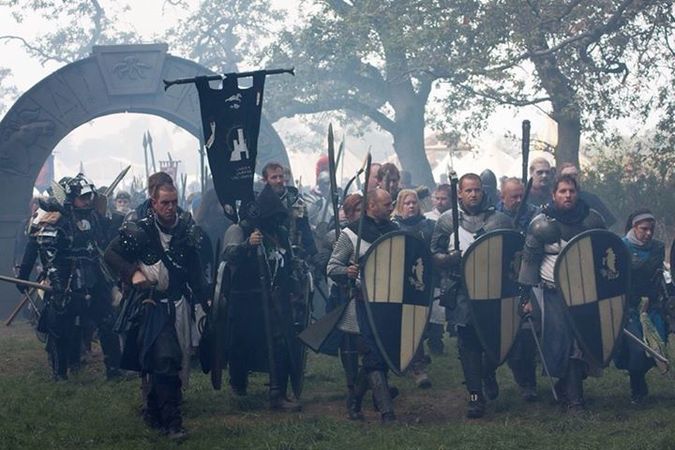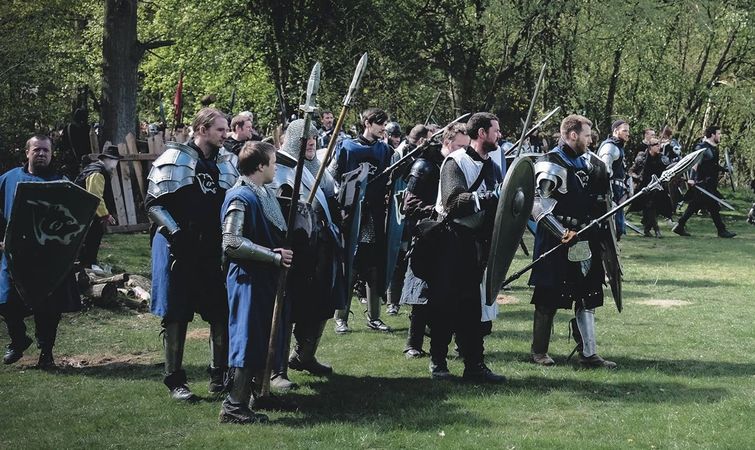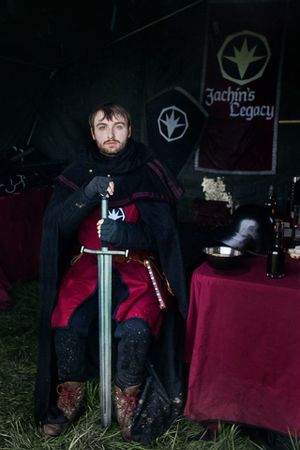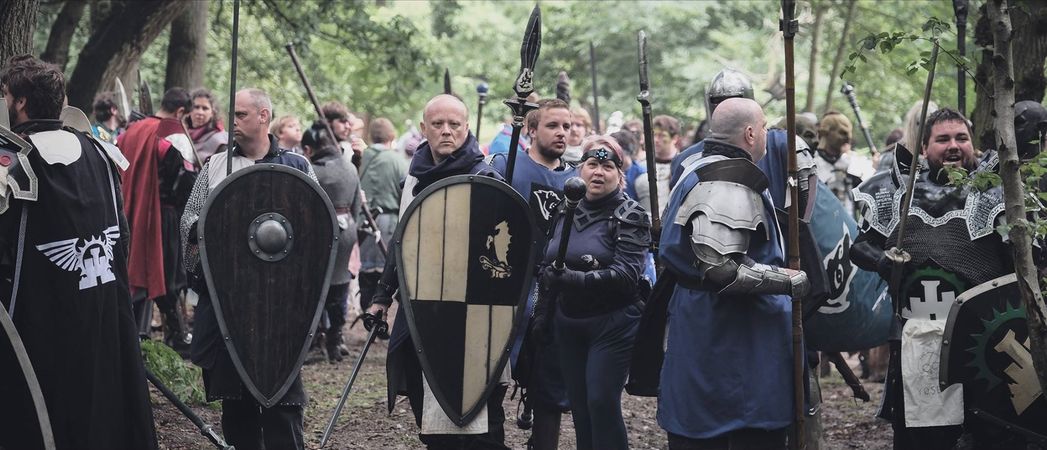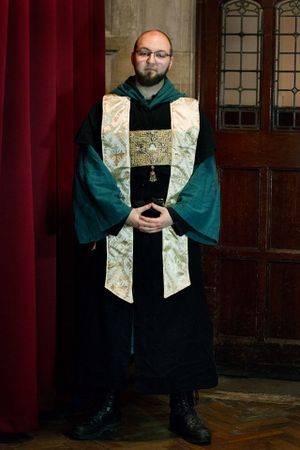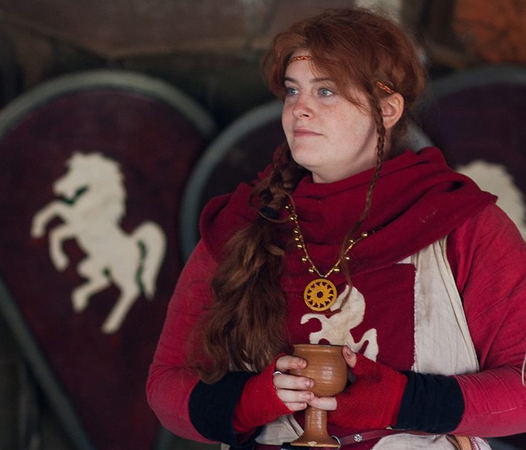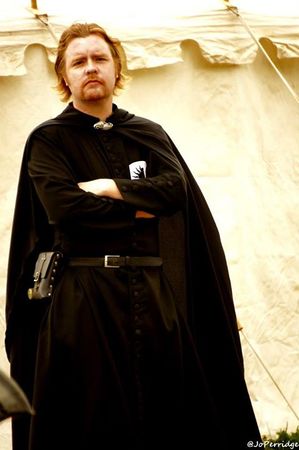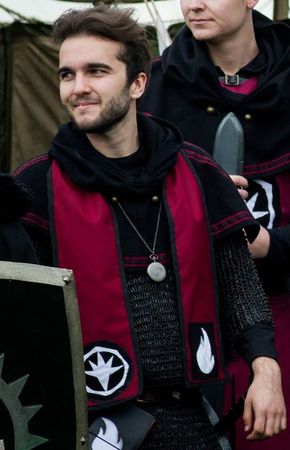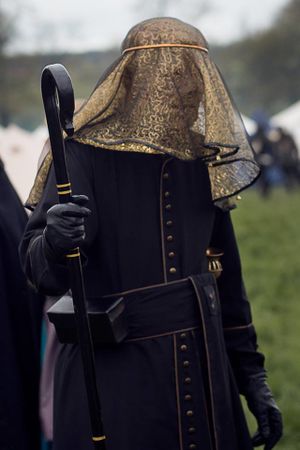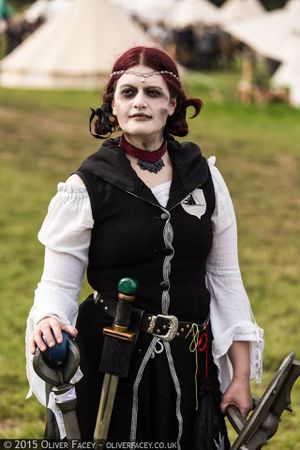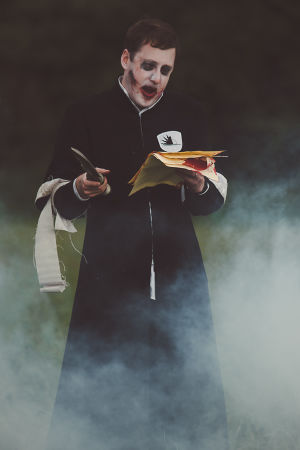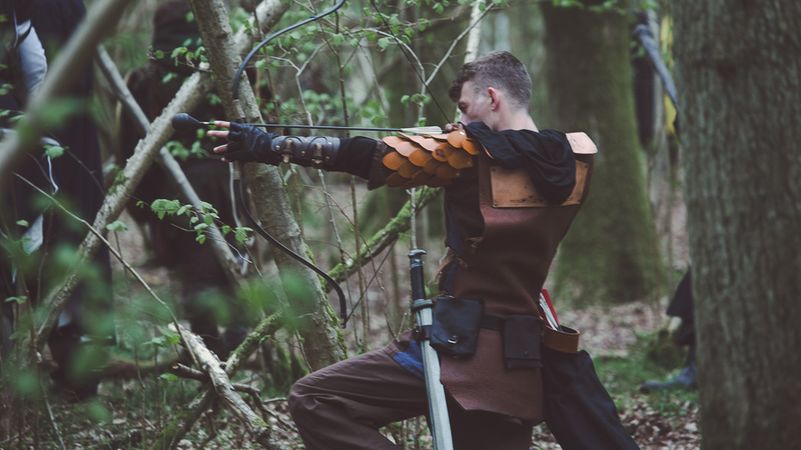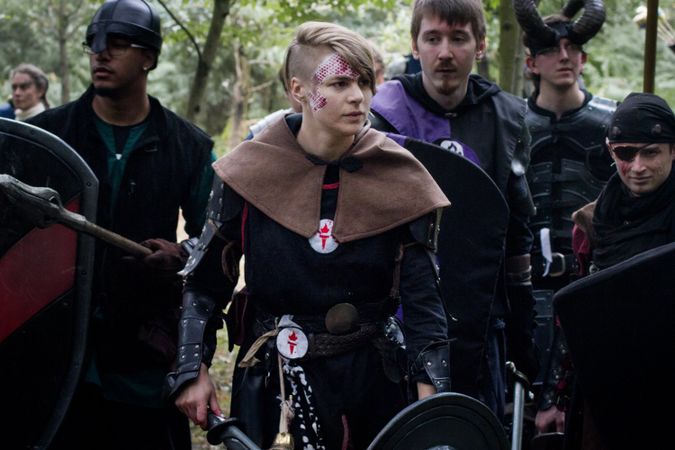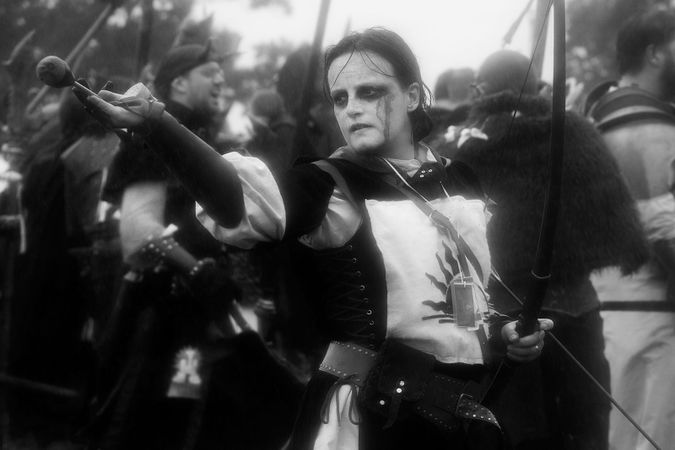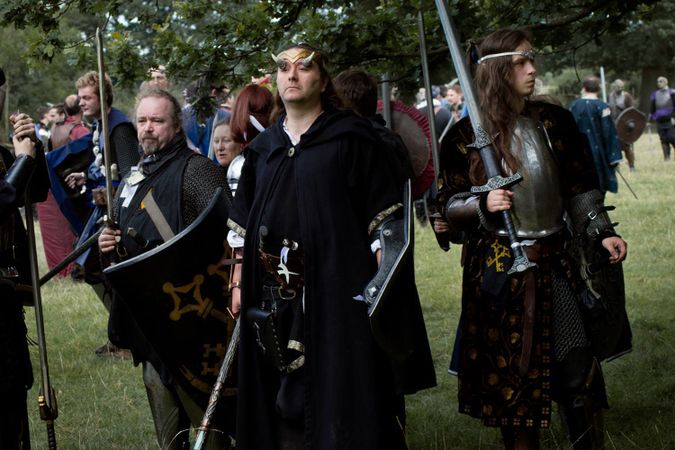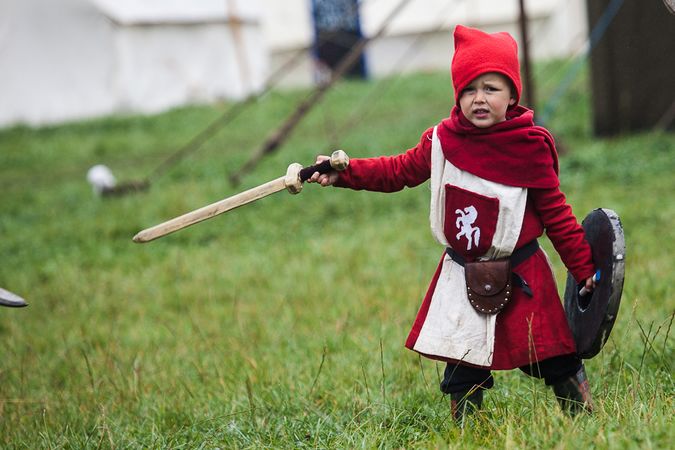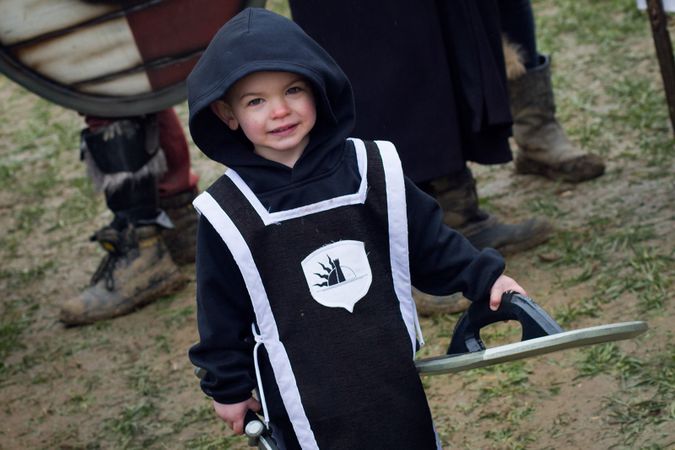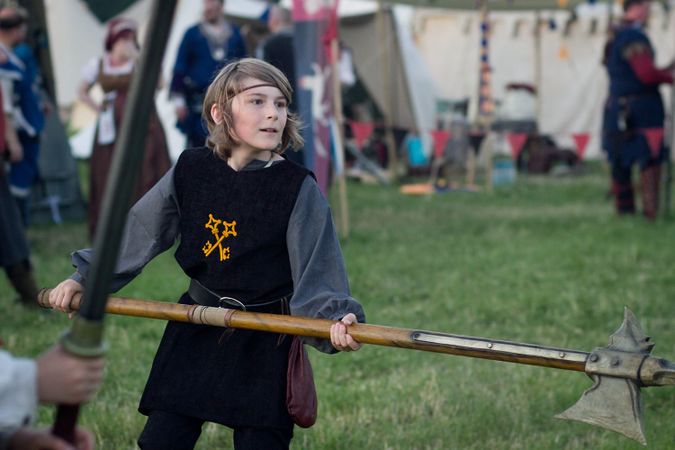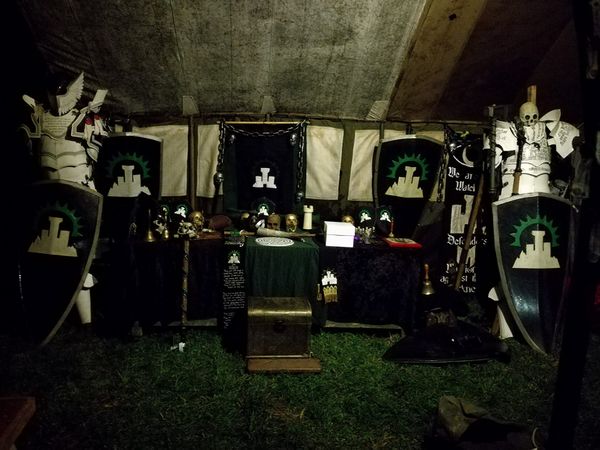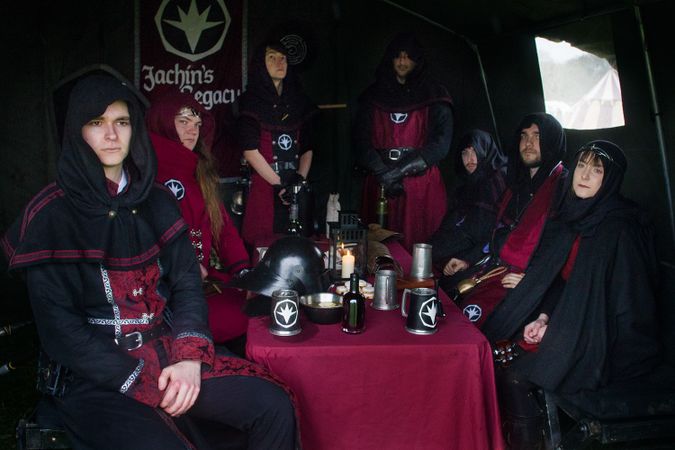Highguard look and feel
Overview
Regal, confident, righteous, stark, traditional, disciplined, militant, uncompromising.
The Highborn look is generally practical and restrained. Its beauty is in the small touches – the geometric trim on the robes, the exquisite jewelry. Colours are deliberately stark and contrasting, and outfits in black and white are commonplace. Many members of a chapter choose to adopt similar garb, with the symbol of their chapter displayed prominently on the chest, shoulders, or at the breast. This is particularly true for Highborn warriors who show their solidarity and loyalty with their fellows by marching into battle decked in identical garb. Of all the nations of the Empire, the Highborn are the most inclined to uniformity, a visible display of their inner commitment to their shared faith and destiny.
Rather than displaying impractical frivolity in the cut of their garments, Highborn show their taste and wealth in jewellery, and the decoration of cloth. Jewelled and embellished trims at the hems of garments are popular, as is the intricate braiding of hair and heavy, elaborate jewellery.
Also see Highguard costumes and icons and artistry.
Breakdown
Influences
Gondor, Crusader Knights
Materials
Highborn materials are usually processed, such as wool, cotton, silk and velvet. They are typically solid and of the highest quality available as befits the rank of the wearer.
Colours
Black with a white contrast is most common but where there is colour, it is likely to be dark - bottle green, red, charcoal and midnight blue - and always set against the contrast of white or cream.
Clothing
The Highborn dress in simple, practical lines – wearing long, layered robes and tunics in starkly contrasting colours, most often simple layers of black and white or sometimes using black or white as a contrast to different colours. Decorative mosaics and fabrics with complex geometric patterns are popular.
Some Highborn may choose to wear a dress rather than a robe. Highguard dresses are constructed along simple but formal lines in dark fabrics. They often have a high neckline or standing collar; lengthwise they always come at least to the ankle.
Veils are commonly worn by all genders both in funeral rites and on other sombre occasions. They set the wearer apart, offering anonymity and a sense of de-personalisation. They are often worn when distasteful actions, or those associated with a rank or position of authority rather than an individual, have to be undertaken
Some Highborn, particularly those in authority, wear hoods or cowls, usually in the colours of their chapter.
Highborn costume is elegant and flowing, long layered robes and tunics, dark coloured in starkly contrasting colours, most often simple layers of black and white or sometimes using black or white as a contrast to different colours.
- Highguard Steward.jpg
- Highguard-2564.jpg
- Highguard-2988.jpg
The Highborn are a militant people and this is reflected in their dress.
- HighRed2.jpg
Cowls & veils
Highborn veils are designed to cover the face to conceal the wearers identity and project anonymity. Cowls are a common feature of Highborn costume, especially for the powerful.
Jewellery
The Highborn are a people with a manifest destiny, to unite the human nations and lead them to a virtuous future. Their jewellery reflects their heritage: it is refined, elegant and regal. Gold or silver worn on the brow suggests authority.
Armour
Highborn armour tends to be full length and layered or segmented. Heavy black leather is common, sometimes with pieces of plate worn over it. The unconquered usually leave their head uncovered, but cataphracts favour a full helm, ideally decorated with wings. Carved or decorated black vambraces are often worn for additional protection.
Traditional lorica in hard leather or metal can work for Highborn, particularly if the suit is tooled or decorated or the outfit incorporates a Highborn style surcoat or cloak.
- Lilian.jpg
- Highguard-2687.jpg
Surcoats
Most Highborn warriors cover their armour with a long flowing surcoat. The ideal surcoat is black or white with a design in a stark contrasting colour. The Crusader knights exemplify this tradition in real history, although an original design for a chapter’s emblem is preferable.
Uniforms for some Highborn chapters include cloaks with the chapter’s emblem repeated on each shoulder.
- HighSurcoat1.jpg
Shields
Large kite or heater shields are common. They are usually decorated in a uniform design with the chapter emblem in stark contrast.
Weapons
Highborn warriors prefer to fight in close formation and prefer weapons suited to this style; short swords, spears, and bows.
Priests
Highborn priests usually dress in white or dark robes with decoration in a stark colour to stand out.
A common element of Highborn priestly costume is a stole - a band of cloth worn round the neck and shoulders that hangs down over the front of the body. Commonly these are decorated with a Chapter symbol, and a symbol important to the character's personal faith or sect.
- Hooded Priest.jpg
Magister
Magisters dress in a similar manner to priests, but they are often marked out by their magical accoutrements.
- Virtuous Striding.jpg
Unconquered
The unconquered serve as scouts, often operating far behind enemy lines. Most avoid the distinctive high contrast clothing favoured by most Highborn in favour of something more concealing and many wear lighter armour or forego armour altogether.
Chapters
Members of the same chapter will often adopt a uniform look using identical or matching items like surcoats. The visual unity emphasizes the unity of purpose and helps a chapter project power. Even without obvious Chapter symbols, a lot can be achieved with matching colour schemes and pieces of costume. Of all the nations, the Highborn have the strongest tendency to form shield walls and fight in close-order formations.
Children
Clothing for Highborn children is usually sombre and simple but good quality, with more elegant garments reserved until they come of age.
Camp
Further Reading
Core Brief
Additional Information
